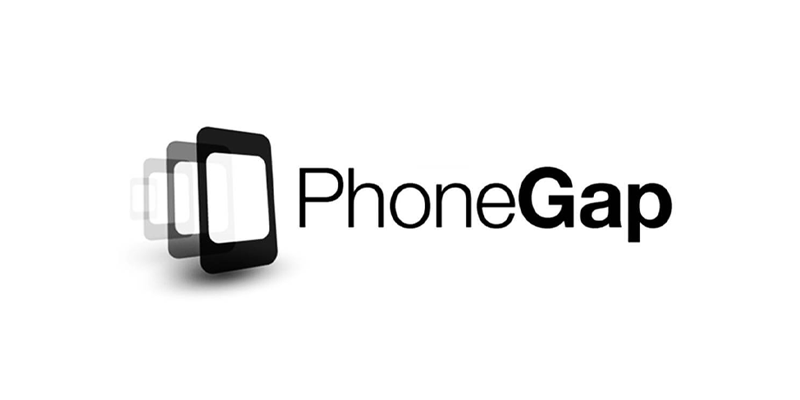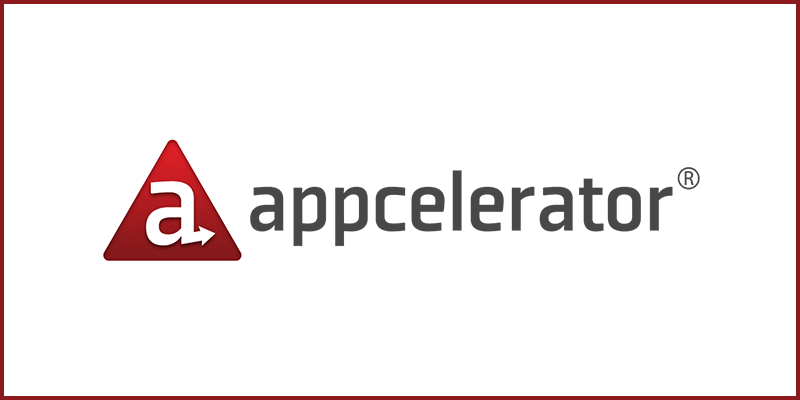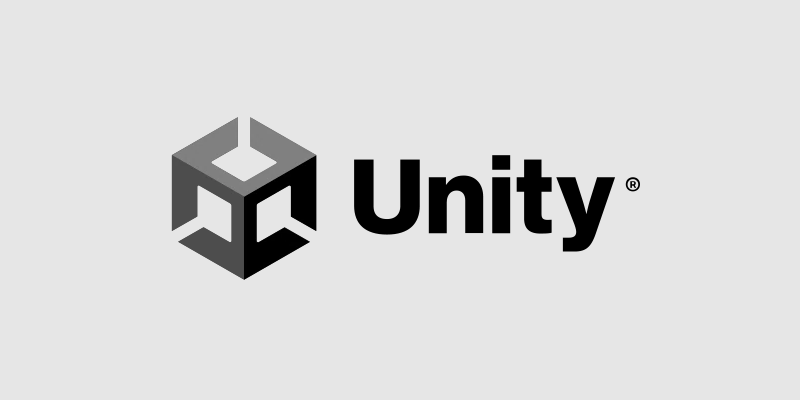Why Should Businesses Hire a Cross-platform Mobile App Development Company in 2022?

April 26 , 2022 Posted by Admin
What is a Cross-platform Mobile App Development Company?

Cross-platform applications have incredible advantages, which play a crucial role in their popularity. The expansion of this platform has led to the experimentation of advanced tools and frameworks for Android and iOS app development. Before we dive into its powerful frameworks, it becomes essential to understand cross-platforms in-depth. Its growth surpassed $7.9 billion in 2021 and it is ready to change the game in 2022 by frenetically increasing its development and download rate. The cross-platform mobile app development company encourages the native feel and look with the new platform.
The cross-platform mobile app is an app that can run seamlessly on multiple platforms like Android, iOS, windows, etc. The apps do not require different codes to function on various platforms. It means developers need to write the code once to smoothly use the app on all the other devices or platforms. This is a prime example of the perks of technological development that enhance creativity by using research and experimenting with technologies to gain maximum benefits. Compared to other apps, such as Native apps, they are cost-efficient and high-performing apps that ease the integration with the cloud. Companies looking for feature-rich apps usually opt for cross-platforms. Startups and small businesses more use these apps. Moreover, these applications use multiple programming languages like HTML, CSS, and JavaScript to reach a wider audience through various devices in a short time.
What are the Universal Cross-Platform Frameworks?

The tech-savvy approach toward the modern world that empowers digitalization and automation has led organizations to use robust tools and frameworks that reduce the quest for fats and highly responsive applications. Let’s look at a few of the best frameworks like React Native, Ionic, Flutter, etc.
React Native

When talking about ideal cross-platform app frameworks, React Native is the first one that comes to mind. The unique framework is built on JavaScript for iOS and Android app development, using one code to give the mobile apps a native-like feel. It enables developers to write modules in different programming languages, including Swift, C, and Java. React Native is an ideal cross-platform app development tool by the best mobile app development company, improving video processing and image editing that other API frameworks do not service. Since it facilitates users with innovative features, it has become the choice of developers worldwide.
Many of the most influential social media brands, like Facebook and Instagram use React Native to reach billions of users. Its never-ending benefits for enterprises have sky-rocketed this framework’s demand, making it a hit in the 21st century. Besides this, the framework allows swift prototyping and leverages high initial velocity to improve the developer’s trust. It is one of the easy-to-learn frameworks that support agile development.
The open-source, community-driven framework offers bug fixing and unique features with regular updates that keep the users entertained. React Native focuses on creating a highly responsive and functional user interface that decreases the loading time, giving users a smooth browsing experience. Last but not least, this tool is highly compatible with the third-party plugin that enhances its overall functionality and features.
Examples of React Native Apps
- Skype
Ionic

Organizations often searching for a powerful SDK end up with Ionic. It is a cross-platform app development framework or, in other words, a robust HTML5 SDK integrating technologies like CSS, HTML, and JavaScript for its functions. It is based on AngularJS, enabling developers to create user-friendly and interactive user interfaces with a native-like feel, making it a popular choice of the best app development company.
The platform creates an application for web, desktop, iOS, and Android. Further, with its pre-designed components, engaging paradigms, unique typography, and beautiful themes, it has become one of the most demanded frameworks. Since it is an open-source framework, it enables alternations in the code structure that facilitate developers with different app development skills to use it smoothly and save time.
Ionic, a SAAS-based UI framework, was developed specifically for mobile systems, using multiple UI components to create next-level applications. Further, it offers numerous extensions to HTML’s syntax, core functions, components, and attractive features. The incredible framework properly uses Cordova plugins allowing complete access to all the device’s in-built features like GPS, camera, phonebook, and audio recorder. Ionic, an easy-to-maintain and read, scalable and native-styled framework, offers customizable tools, enhancing user experience with the ultimate support, speed, and third-party access.
Now developers leverage companies with several APIs such as JSX, TypeScript, and Virtual DOM. The Ionic’s cross-platform mobile app development services offer stencil, capacitor, and lazy loading to provide out-of-the-box functionalities, offering user-friendly platforms that run natively.
Examples of Ionic Apps:
- Sworkit
- Diesel
- MarketWatch
Xamarin

The best app development agency in the USA, UK, Canada, Australia and Europe emphasizes the robust development of cross-platform applications. Companies are always on the lookout for new frameworks that provide differentiation in features and functions for any app. In this case, Xamarin is entirely different in how it functions. One of the leading free, open-source tools is compatible with all mobile operating systems, ensuring the same performance and experiences as native apps. What could be better than creating an app using a single .net code for all platforms? It uses 90% of the code to build an app for various platforms. It uses C#, F#, and .NET as its programming languages, unlike other HTML or JS library frameworks.
Businesses usually opt for Xamarin when the client looks for apps with aesthetics like native applications, letting them create stunning apps with APIs. It comes with a fantastic toolset for the development of native-friendly apps. These tools include Xamarin SDKs, Xamarin Test Cloud, Xamarin.Mac and Xamarin Studio/ Visual Studio. Moreover, developers create platform-specific hardware to provide native-like performance, mitigating compatibility issues with its plugins and APIs.
From interface to modification to flexibility, the app is the solution for all enterprises trying to create immersive experiences with a One-Size-Fits-All approach. Its debugging, designing, and code editing tools differ from other frameworks, boosting quick installation, amazing visual experience, and automatic Android SDK installation. Furthermore, it guarantees customization and native libraries. It supports Objective-C, C++, and Java libraries, making it the best iOS and Android app development tool. Lastly, it offers compile-time checks to witness the run-time errors and opt for high-functioning applications.
Examples of Xamarin Apps:
- HCL
- Fox Sports
- BBC Good Food
Flutter

Flutter is the top SDK or cross-platform app framework that Google introduced in 2017. It allows developers in Android and iOS app development to seamlessly run on multiple devices using a single codebase. It is considered one of the high-performing, open-source UI SDK. Unlike other tools, it uses the Dart programming language to create customized applications and boost the hot reload. Flutter enables portable GPU, rendering UI power to work on new interfaces. The use of the latest technology automates the UI updating tasks. Here, only the variables need to be updated for the user interface changes to be visible. It is the perfect choice for many to create MVP as it promotes a cost-efficient development process.
Flutter is known for remaking a widget tree offering icons, navigating, fonts, etc., and quickly understanding code adjustments. Furthermore, its in-built graphic engine reduces the hurdle of making individual interfaces for all operating systems.
Examples of Flutter Apps:
- Alibaba
- Google Ads
Adobe PhoneGap

In this golden era, Adobe PhoneGap is a cross-platform tool for developing mobile applications by using CSS, HTML5, or JavaScript as its programming language. It is a free, open-source framework based on Apache Cordova that provides access to the latest toolset. In recent times it offers a cloud solution for developers, allowing them to share the app prototype in between the development process to take feedback from other developers on its functions, features, and operations. According to the top mobile app development company, PhoneGap supports all the built-in device features ranging from storage, camera, GPS to contacts.
The impeccable tool lets developers build apps using existing web application development services or technologies. Its architectures offer a plugin-able nature, allowing access to native APIs that can be extended.
Examples of PhoneGap Apps:
- Paylution
- Wikipedia
- TripCase
Appcelerator

One of the fastest, cost-effective cross-platform mobile app development frameworks, Appcelerator simplifies the app development process. This framework uses JavaScript code to create a native-like application that provides cloud-like robust performance, ensuring pacing, distributing, and examining in real time. Besides this, it provides a smooth and effortless mobile app development process using a single codebase that streamlines the company’s goals and requirements. Organizations looking for a rapid app development technique usually opt for Appcelerator for creating efficient and quality apps with an interactive UI. It even supports the creation of prototypes. Further, it integrates continuous delivery systems like SCM services.
The tool detects bugs, crashes, and other malicious activities to make timely adjustments to the app and improve overall performance. Developers get access to Hyperloop, one of the leading cross-platform APIs for iOS and Android app development. It also comes with an ArrowDB, a schema-less data store that enables a mobile app development company to launch data models with no extra setup efforts. Above that, developers are privileged with pre-built integration for MS SQL, MS Azure, Box, MongoDB, Salesforce, etc.
Native Script

The greatest cross-platform mobile app development company makes the ultimate use of NativeScript. The cross-platform tool based on JavaScript creates highly functional apps. It wouldn’t be incorrect to say it is the choice of many developers searching for WORA functionality in the modern world. Like many other frameworks, it offers native APIs, letting developers reuse current plugins from NPM.
The framework is known for its stunning, accessible, and native user interface that needs a code to be defined once and lets the tool do the rest by adapting to run anywhere. Furthermore, it personalizes the UI experiences to particular screens and operating systems. However, it comes with a unique addition to its features: the web resource that provides developers or companies with loaded plugins for all solutions, removing the need for third parties. It also uses Angular and TypeScript for advanced programming usage. Since the developers here do not need any additional skills or knowledge about native languages, they can easily access the Android and iOS APIs. It supports many segments like AndroidArsenal and uses local strategies from new libraries.
Examples of NativeScript Apps:
- Strudel
- Regelneef
- BitPoints Wallet
js

An app development company searching for an efficient and responsive framework that supports server-side development implements Node.js. It is an open-source cross-platform app development framework built on the Chrome V8 JavaScript engine. It further promotes scalable network apps. Additionally, it facilitates developers with a rich library that simplifies the web and mobile app development process. Since all of its APIs are asynchronous, the servers do not wait for the data from APIs. Hence, proving their non-block nature. Unlike most frameworks, the Node.js notification mechanism enables servers to get immediate responses from the previous API call.
Instead of buffering, the app outputs the data in chunks, spreading the execution process to deliver advanced functioning applications. The tool uses a single-threaded model supporting event looping functions for scalability. Lastly, it allows all developers to execute the information requests simultaneously.
Examples of Node.js Apps:
- Netflix
- PayPal
Sencha

Sencha Touch is the top enterprise-grade app framework that supports complicated platforms to build next-age apps that mitigate future issues. It is typically used for creating web-based applications using hardware acceleration techniques. Imagine creating end-to-end tested, secure and beautiful UI integrated components and libraries. This app supports large organizational apps that can be effectively maintained with HTML5, CSS, and JavaScript technologies. Hence, this leads to the development of data-intensive web and mobile apps.
The iOS and Android app development framework leverage 115+ supported and tested user interface components that easily integrate with the applications. Above that, it facilitates the app development company with ‘Themer,’ letting developers create reusable native-looking themes by customizing those built on Ext JS, iOS, Ext React, and Ext Angular. It even enables developers to organize the content. Its agnostic backend data package lets companies smoothly work with data sources.
Node.js comes with 50+ built-in and customizable UI widgets like forms, menus, toolbars, etc., while offering complete code compatibility between the old and new ones. From IDE plugins that improve app productivity to MVC architecture that enhances code readability, it has become one of the ideal cross-platform frameworks. Finally, it offers a data visualization table, making it easy to track app information.
Examples of Sencha Apps:
- Geolocation
- Splash Screen
- Accelerometer
Corona

Corona is an app development tool used for building cross-platform apps for desktop and mobile phones. It is a free tool that produces high-quality graphics while improving speed, scalability, portability, user-friendliness, and extensibility. Like others, it uses a single codebase to run on multiple devices. Being the best SDK, it speeds up the coding processing by ten times, easily changes or updates codes, and implements the results in real-time. It goes beyond the expectations of basic app frameworks and lets programmers build 2D mobile apps for all platforms like Windows. Since it has lightweight, it optimizes its performance increasing its backend reliability on Lua, a multi-paradigm programming language.
The SDK has above 1000 APIs that motivate developers to explore and experiment with animations, music, audio, texture management, Box2D physics, native components, data, etc. Furthermore, it provides complete support to 200 plugins like in-app media, advertising, hardware, and analytics. Lastly, it supports real-time testing.
Examples of Corona SDK Apps:
- Bubble Ball
- Dabble
- Kindle Fire
QT

Companies often looking for cross-platform app development kits often end up with QT. Many programmers consider it one of the best tools because of the quality of features that help create incredible apps, user interfaces, and embedded devices using the same code for operating systems like Windows, Android, and iOS. It comes in handy at the time of low-performing applications. Here, developers use QT to make any necessary changes that are automatically applied to the app. QT is unlike any other software tool for observing and evaluating an app’s performance. This is the only app that has the power to analyze how the business app performs on different platforms. However, it is only possible because of its easy-to-use nature as it comes with a simple interface compared to other cross-platform frameworks that we discussed before. Thus, developers can create fast and smarter creative apps by automating their development and installation process.
Examples of QT Apps:
- Spotify
- Weather App
- Night Clock
Unity3D

Another robust cross-platform application engine, Unity3D, is popular amongst developers because of its realistic and high-quality graphics that make users fall in love at first sight. Since it is an easy-to-use tool, a beginner can easily use it for more development than just for mobile apps in a user-friendly environment. It enables developers to export games and apps to various platforms like Xbox, iOS, Android, Linux, PlayStation, Web, Windows, etc.
Unity 3D is an intelligent tool that traces user analytics and lets the developers share the app on social networks. Moreover, the custom app development companies can quickly connect with all the Unity3D developers’ networks known as Unity Connect that search for help and get the queries cleared related to technical issues with coding.
Examples of Unity3D Gaming Apps:
- Last Day On Earth
- Eclipse: Edge of Light
- Guns of Boom
Some of the Other Cross-Platform Tools, Editors & IDEs
- RhoMobile
- Kony Mobile Platform
- Monocross
- Codename One
- IntelliJ
- Visual Studio
- Cocos2D
- MobinCube
- Dropsource
- AppsMoment
- Ruby Motion
- Yapp
How can Organizations Benefit From the Cross-Platform Apps?

Maximum Exposure
Cross-platform development empowers companies and developers to create futuristic apps and launch them over various platforms. Imagine using a single app on both iOS and Android platforms. This will target more customers, expanding its reach at all times.
Decreased Development Cost
A cross-platform’s Android and iOS app development focuses on creating interactive apps with the concept of writing once run on all the platforms. The reusable codes and the agile development processes decrease the development cost for such companies, improving the business performance on all the platforms.
Easy Maintenance
Cross-platform apps are universal apps compatible with multiple platforms, making it easier to deploy and maintain the changes to its code. Updates are swiftly synced all over the platforms, saving time and money. If a bug is found, the best app development company fixes it once.
Fast Development Process
Unlike many other app development technologies, cross-platform app development offers a quick process, providing a win-win situation for companies. Further, the single source code for multiple platforms decreases the development efforts by 80%, helping deploy a feature-rich app in less time. It motivates developers to complete the task by the expected deadline to save companies from additional costs.
Reusable Code
What could get better than reusing the code on different platforms instead of creating a new code for each forum? Hence, saving time, money, effort, and resources by avoiding repetition.
Smooth Cloud Integration
Since the cross-platform apps are compatible, the iOS and android application development services in USA often exploit several plugins integrated with the cloud. The single code source is linked with different plugins and extensions to improve the app’s functionality, features, and scalability.
Quick Customization
These apps’ nature to reuse codes on different platforms reduces the Time-to-Market (TTM) with faster deployment. Here if the app needs to be customized, it becomes easier for the companies to do so with minor changes in the original code. This leads to quicker product development that guarantees a competitive edge with enhanced user engagement.
Challenges Faced by Cross-Platform App Development
- At times, glitches in performance are due to inconsistent or interrupted communication between native and non-native device components.
- Low performance usually leads to unsatisfactory user experiences.
- Developers from an app development company often face difficulty while maintaining cross-compliance with such applications across various operating systems and devices.
- Cross-platform apps are not a good option for organizations that use the app for storing consumer data due to security reasons.
Though these challenges might affect the overall productivity and performance of the best app development company, they are lesser when weighed against its benefits.
Frequently Asked Question (FAQs)

Q1. What is the best cross platform mobile development framework?
There is no top or best cross-platform application development framework for businesses. It depends on the structure of each organization and the industry they are operating. Further, companies have different goals, values, products, and services. Thus, developers create strategies and opt for frameworks that streamline the company’s objectives and needs. Hence, any mobile application development framework can be derived from the above-listed categories. Pick the one that matches the sustainability of the organization.
Q2. What are the app development steps in cross-platform development?
Here are the 6 basic steps in the cross-platform app development process:
- Define the company’s objectives
- Brainstorm
- Create a lap out for the app’s features and functions
- Research about the competitors
- Design the App
- Create and test wireframes
- Develop the application
- Test the App
- Ask for feedback and make changes if needed
- Deploy the mobile app
Q3. Should companies create a native or cross-platform app?

When deciding which app to develop, it becomes crucial to select the one that provides high performance at low cost and time. Companies looking for full access to mobile resources choose the native app. Firms looking for responsive apps that let developers take complete advantage of the device’s hardware should choose a native app. It is also beneficial for them as it simplifies updating and adding new features in the app later on.
Cross-platform apps are best for SMEs and startups with a limited budget and can accept less responsive apps. The iOS and Android app development do not provide complicated animation or logic. Hence, making it perfect for beginners. Lastly, companies with limited time to test a new idea and hypotheses in the app world can select it.
Q4. What is the development cost of cross-platform apps?
There is no fixed cost for cross-platform apps, as each differs according to the features, functions, and frameworks an organization chooses. According to the iOS app development company in the USA, the more advanced the app, the more it is its development cost.
Q5. What key features should companies keep in mind when creating an app?
Creativity is the solution for developing innovative apps that target future problems beforehand and provide realistic solutions. Here are four features that help developers and companies create functional apps.
- Create an attractive app
- Opt for a platform-independent approach
- Select a designer-friendly approach
- Implement the UI guideline for all
Summary
Cross-platform apps have changed how apps can seamlessly work on multiple platforms or devices using a single code, eliminating the risks. To develop any universally compatible app, the mobile app development company needs a cross-platform framework that reduces the development cost and time to create unique applications. But the real question remains: Are cross-platform mobile apps the right choice for your business? It depends on the organization’s goals, operations, and requirements. Developers need to do a comparative analysis before choosing any framework. Thus, consultation is a vital part of the app development process to make an informed decision. Remember, a company’s main is to achieve a competitive advantage.
Services

We at App Development Pros, a renowned mobile app development company, are like superheroes of the smartphone app world! We provide digital opportunities in the mobile app design form and help you turn fantastic ideas into powerful mobile apps for your business needs. Our top-notch app development services build the perfect mobile applications for your needs by working closely with you, making us one of the USA's best mobile app development companies.
2025 (c) App Development Pros - Privacy Policy - All Rights Reserved



































Leave a Reply